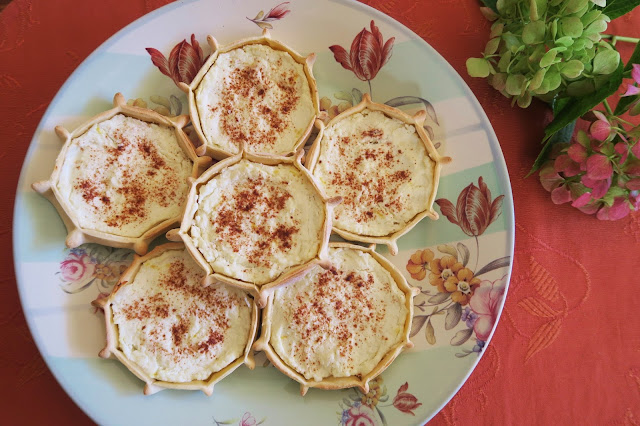
Although not a fruit grown in my parent’s current back yard,
it is one that I recall in the back garden of our Victorian single fronted home
in Melbourne. The distinctive cultural contrast was evident through the homes
facades and what was growing in the back. Whether it was a fig, olive, or nespole tree or a prickly pear cactus, I
am certain we weren't the only Italian family in the street with these unusual
fruits growing in our front or back yards. Who would think that this ugly,
spiky fruit from an invasive succulent plant known by its scientific name as opuntia
vulgaris mill or in Italian ficho d'india,
would eventually be seen and sold at markets and in fruit shops today.
Once considered a pest in Australia, it is now promoted for
its antiviral and anti-inflammatory properties; treating diabetes, high
cholesterol, obesity and even hangovers. It is said to be high
in amino acids, fiber, B vitamin, magnesium , and
iron. According to the Encyclopedia
Britannica, the first recorded introduction of prickly pear was attributed to
Governor Phillip at Port Jackson in 1788. The reason for its introduction to
the new colony was to create a cochineal industry. A cochineal is an insect that feeds on
certain species of cactus and from which a scarlet dye is obtained; at the time used to colour the distinctive red coats of the British soldiers. Many of these cacti plants are growing wild and seen bordering farm lands and countryside in rural Australia and many
still feature in suburban backyards for their fruit.
This small box of fichi
d'india (prickly pears) were passed onto me by papa` from a friend who still grows them in
his backyard. I have to confess though that I
cannot recall the last time I ate one since a very young age and only ever eaten raw. It was also the only fruit growing in our garden that I was
not allowed to pick, handle or peel on my own due to its finely barbed bristles
and there are many stories of the trials and errors of peeling this fruit, and
the pain that it inflicted. I was told that my husband’s father
would undertake a very lengthy process of removing the spikes before presenting
them to the family table which consisted of emptying the box on the grass and
with a hard broom brushing off their spikes and hosing them down with water. Then with heavy duty garden gloves and tongs
in hand he would inspect each one. Once
at the table the art of peeling a prickly pear involved knife and fork. At no
point in time would handling the fruit with your hands be allowed.
The fate of these prickly pears was determined by my love of preserving the seasons harvest and so a jam recipe was kindly forwarded onto me by an Instagram friend Lana @mialanina. A liqueur recipe using this fruit was also suggested - one that I will surely try. Varied recipe suggestions that came through from others included prickly pear paste, and ice-creams. I was also informed that in Sardegna it is turned into a jam and used as a filling for their renowned tilicas biscuits.


Marmellata di Fichi d'India (Prickly Pear Jam)
This recipe was kindly supplied by Lana @mialanina
Makes one medium sized or two
small sized jars of jam
This is a very simple recipe to follow and the quantity of
fruit is purely dependent on how much you have available. When making jam, the
fruit pulp to sugar ratio should be equal, so adjust your quantities
accordingly.
Ingredients:
10 prickly pears
sugar equal quantity to fruit pulp without seeds
grated rind of 1 organic lemon
grated rind of 1 organic orange
Cleaning the prickly pear according to this recipe requires
immersing the whole fruit with skin on in water using tongs and allowing them
to soak for an hour, changing the water a few times. This will soften the spikes and allow for
easy cleaning. I still undertook the
method of using knife and folk to remove the skin as seen below, which means
that there is no handling of the fruit with bare hands.
Once all the fruit is peeled, place in a heavy based saucepan
and on a low heat with lid on cook until the fruit begins to break down, approximately 15 minutes. The next process is to separate the pulp from
the seeds by passing fruit through a sieve pressing with the back of a spoon into a bowl. The pulp will appear runny similar to a
smoothie. You could end the process here and drink it as is, enjoying its nutrients or continue on to
make the jam.
Weigh the pulp and transfer into the same saucepan. Weigh equal amounts of sugar to pulp and
place the sugar in the saucepan along with pulp. Cook on low heat and stir occasionally until
the setting point has been reached. Meanwhile grate the orange and lemon rind
and add to the jam at the very end of the cooking process. I cooked the jam for a
further 10 minutes in order for the citrus flavours to infuse into the jam.
Pour the hot jam into one medium or two small sterilized jars
and seal while still hot. This jam makes a lovely tart or simply enjoyed for
breakfast on toast. Half of this jam ended up in a crostata which I shared with my parents. I am currently enjoying the last slice while finishing off this post! :)










Comments
Post a Comment